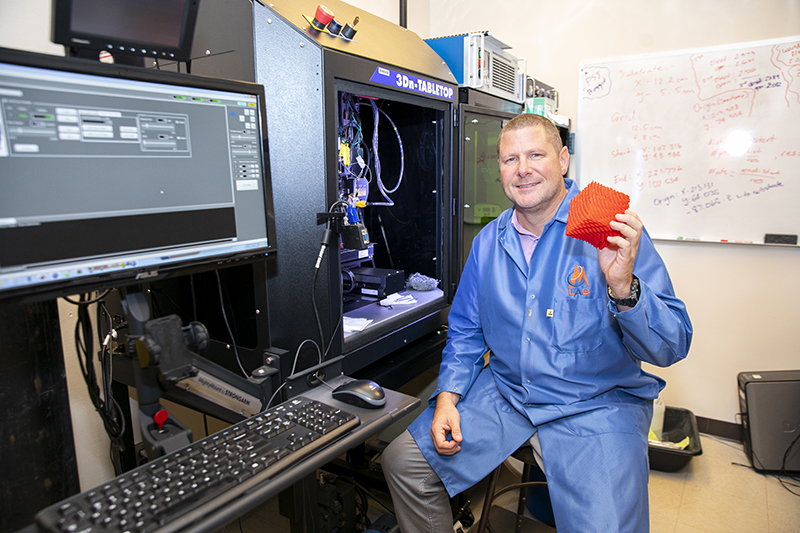UTEP Professor Awarded $100K Grant to Develop Fast Electromagnetic Simulation Algorithms
Last Updated on August 12, 2019 at 12:00 AM
Originally published August 12, 2019
By UC Staff
UTEP Communications
The Electrical and Computer Engineering Department at The University of Texas at El Paso’s College of Engineering has received a $100,000 grant from IERUS Technologies to develop numerical techniques that will be incorporated into a high-performance computing (HPC) platform suitable for simulating and optimizing advanced photonic devices.

Leading the research is Raymond C. Rumpf, Ph.D., the Schellenger Professor in Electrical Research and director of UTEP’s EM Lab, who says the overarching goal of the project is to develop a massively parallelized electromagnetic simulation code that runs very fast. UTEP’s contribution to the project will be identifying and implementing the fastest and most efficient way of handling curved dielectric boundaries.
The project is supported through a yearlong subaward under IERUS Technologies of Huntsville, Alabama. The research will be performed in the MATLAB computing environment at UTEP. Rumpf and his team are evaluating six separate approaches for handling curved dielectric boundaries and will compare them in terms of run-time, memory usage and ease of being implemented in a massive parallel computing environment.
“Research findings will give electrical and computer engineering new and powerful capabilities to simulate very large structures that would otherwise be impossible,” Rumpf said. “This will contribute greatly to our mission of pioneering revolutionary concepts in electromagnetics and photonics.”
Rumpf’s EM Lab has an extraordinary record of taking on high-risk research and delivering breakthrough technologies.